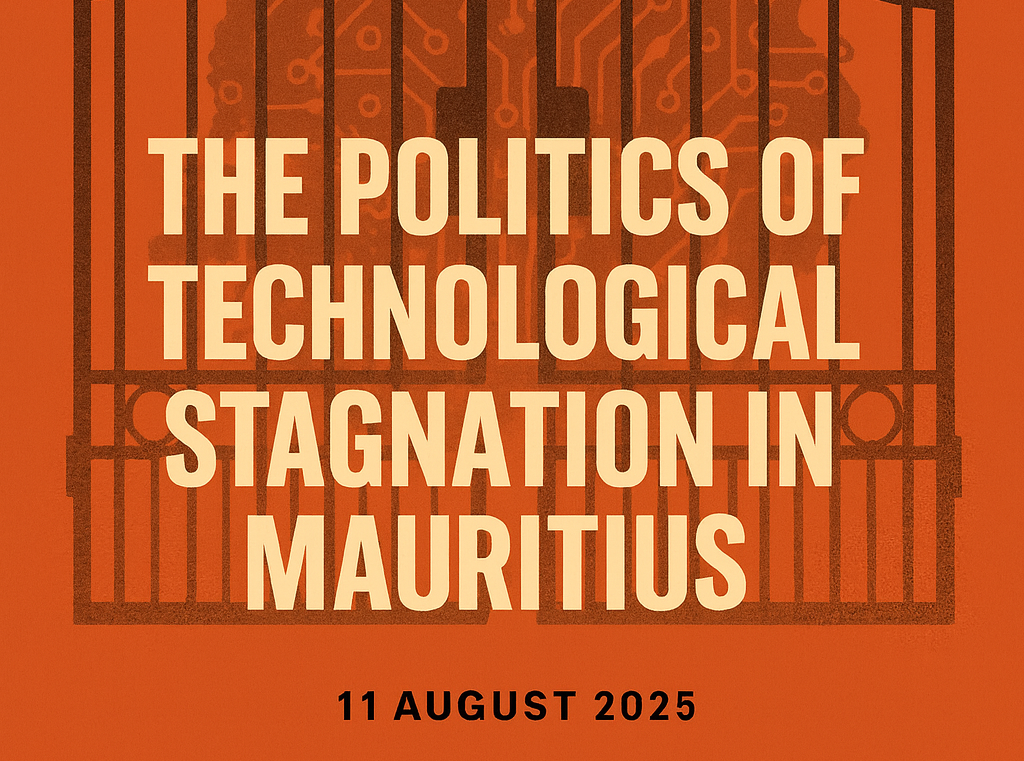Payroll Dependency: Mauritius’s Technological Handbrake
In an era when technology is reshaping governance worldwide, Mauritius remains tethered to outdated systems, paper-bound bureaucracy, and an inflated public payroll. The country’s official 2025/26 Estimates of Expenditure reveal what many have suspected for years: the state’s spending patterns are less about efficiency and service delivery, and more about sustaining a political order built on dependency.
The figures speak for themselves. The Ministry of Health and Wellness will devote Rs 10.33 billion — 55.8% of its total Rs 18.5 billion budget — to salaries. Education and Human Resource will spend Rs 7.3 billion, or 35.6% of its Rs 20.53 billion budget, on payroll. Agro-Industry will allocate Rs 1.23 billion, 27.7% of its Rs 4.46 billion, to wages. Even the Ministry of Environment, with a smaller workforce, commits 16.4% of its Rs 2.73 billion budget to staff costs. These are not incidental figures — they are the scaffolding of a deliberate political architecture.
System Designed for Control
The International Monetary Fund has long warned that public sector wage bills exceeding 30% of recurrent expenditure crowd out the very investments that drive growth. In Mauritius, that threshold is not only breached but normalised. The political logic is clear: a large, dependent public workforce ensures a predictable bloc of voters whose livelihoods are tied to the status quo. This is not a recent development. Since independence in 1968, successive administrations have expanded the civil service both to absorb unemployment and to consolidate political loyalty. Attempts to modernise — from early computerisation in the 1990s to later e-governance initiatives — have been partial and often quietly shelved when they threatened to reduce the political utility of payroll dependency.
Health: A Case Study in Misallocation
In Health, the misalignment between resources and needs is especially stark. With more than half of its budget consumed by salaries, the Ministry of Health and Wellness faces mounting pressure from demographic and epidemiological shifts. According to the World Health Organisation, Mauritius’ over-60 population is projected to reach 25% by 2040, driving demand for complex geriatric care and chronic disease management.
Yet, public hospitals struggle with ageing infrastructure, outdated equipment, and growing waiting lists. Capital investment is constrained, even as private clinics and high-end medical facilities expand to meet demand from those who can afford to bypass the public system. The result is a two-tier healthcare landscape — a modern, well-equipped private sector overshadowing a stagnating public service.
The Cost of Dependency
The fiscal opportunity cost is measurable and enormous. If the three most payroll-heavy ministries — Health, Education, and Agro-Industry — reduced staff costs by 10% through automation and redeployment, the state would save Rs 3.88 billion annually. At 20%, that figure would rise to Rs 7.04 billion. To put these sums into perspective, Rs 3.88 billion could finance a nationwide solar rooftop programme, powering 50,000 homes within three years and reducing reliance on imported fossil fuels. Rs 7 billion could digitise all government records, roll out universal fibre broadband, and launch a national AI-powered public service portal — eliminating the need for citizens to queue for basic services. The same savings could modernise every regional hospital, providing new diagnostic equipment, operating theatres, and telemedicine hubs to bridge rural health gaps.
Lessons from Other Islands
Small island states with fewer resources have shown a different path. Malta has kept its public sector wage bill under 30% of recurrent expenditure, channelling savings into a digital services platform that allows citizens to start businesses, pay taxes, and access medical records online in minutes. Seychelles has invested in renewable energy and marine conservation by restraining payroll growth and leveraging international partnerships. Mauritius, despite its connectivity, educated workforce, and strategic geographic position, remains behind. The difference lies not in capacity but in political will.
Technology as a Threat and a Solution
The reason is simple: technology undermines the patronage system. Fully digitised public records cannot be selectively “lost” or delayed. Automated service delivery cannot be withheld for political favour. Transparent procurement platforms make it harder to disguise patronage contracts as competitive tenders. The resistance to such reforms is evident in the regulatory posture of the Information and Communication Technologies Authority. From the 2024 social media blackout during elections to earlier proposals for decrypting encrypted internet traffic, the regulator has too often framed technology as a risk to be contained rather than a tool for transparency and efficiency.
The Real Risk: Missing the Future
The danger Mauritius faces is not a dramatic collapse, but a slow drift into irrelevance — a quiet normalisation of a state model where the primary purpose of governance is to sustain dependency rather than enable development. In such a system, payroll-heavy budgets are not an inefficiency to be corrected but a feature to be preserved. Breaking this cycle will require more than budgetary adjustments. It will require the political courage to cut waste, redeploy human capital into high-yield sectors, and embrace the very technologies that make government more accountable.
Mauritius has the infrastructure, the private-sector appetite, and the human capital to leap forward. What it lacks — and has lacked for decades — is the will to dismantle the payroll-dependency state. Until that will emerges, the island will remain technologically constrained by design, held just far enough behind the curve to keep its citizens within reach of the puppet strings.

Add comment
Comments